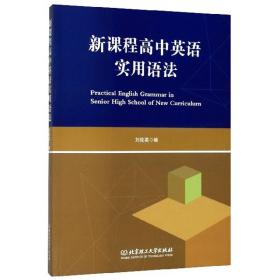
高中英语教师与新课程实施:一项质的研究:a qualitative study9787308203968
正版图书,可开发票,请放心购买。
¥ 34 5.0折 ¥ 68 全新
仅1件
广东广州
认证卖家担保交易快速发货售后保障
作者方玺著
出版社浙江大学出版社
ISBN9787308203968
出版时间2020-06
装帧平装
开本其他
定价68元
货号9891283
上书时间2024-12-14
- 店主推荐
- 最新上架
商品详情
- 品相描述:全新
- 商品描述
-
作者简介
方玺,女,湖州师范学院教师教育学院副教授,哲学博士,现任教于教师教育学院,担任小学英语教育学、课程与教学论、教师入职指南等课程教学。入选校中青年骨干教师培养计划,获湖州市青年岗位能手、校教坛新秀、校优
目录
CHAPTER 1 INTRODUCTION
1.1 General outline of this book
1.2 Development of the research interest
1.3 Research basis for this book
1.4 Intended stakeholders for the research
1.5 Organisation of this book
1.6 Glossary
CHAPTER 2 LITERATURE REVIEW
2.1 TBLT and current debates in ELT
2.1.1 TBLT
2.1.2 The implementation of TBLT
2.1.3 Is TBLT a "good" method?
2.1.4 Is there any "best method"?
2.2 Studies which have stimulated my research
2.2.1 Social context and language teaching
2.2.2 Teacher cognition and language teaching
2.3 Theories which have inspired my investigation of curriculum
2.3.1 Defining curriculum
2.3.2 Theories that have inspired my investigation of curriculum
2.4 Implementing the NEC or teaching the NEC?
2.5 Conclusion
CHAPTER 3 METHODOLOGY
3.1 Theoretical considerations
3.2 The pilot study
3.2.1 The setting, research participants and research process
3.2.2 Findings and discussion
3.2.3 Reflection on the pilot study
3.3 Rationale for adopting a qualitative approach
3.3.1 Defining qualitative research
3.3.2 Rationale for adopting a qualitative approach
3.4 Negotiating access
3.4.1 Negotiating access to the field
3.4.2 Negotiating access with the research participants
3.5 My presentation in the field
3.5.1 The creation of my role
3.5.2 Overt or covert research?
3.5.3 The presentation of self"
3.6 Data collection: Processes, techniques and rationales
3.7 Data organisation and analysis
3.7.1 Data analysis process
3.7.2 The conceptual framework of Pierre Bourdieu
3.8 Ethics
3.9 Reflection
3.9.1 Making the familiar strange
3.9.2 Dilemmas in the field
3.10 Conclusion
CHAPTER 4 THE CONTEXTUAL BACKGROUND FOR THE NEC
4.1 Salient features of the Chinese education system
4.1.1 The significance of education
4.1.2 The hierarchical education system
4.1.3 Highly competitive education environment
4.1.4 The NCEE and high school education in China
4.2 Initiatives of the NEC
4.2.1 Political agenda
4.2.2 Critique of Chinas education system and reform as a response"
4.3 The NEC
4.3.1 New objective system: All-round ability to use English
4.3.2 A heightened awareness of teachers and learners autonomy
4.3.3 Inductive approach: Try, explore, discover, practise and co-operate
4.3.4 The emphasis of a formative assessment system
4.4 Responses to the NEC
4.4.1 Response of the JZ provincial DOE
4.4.2 Public responses
4.4.3 Reception of the NEC: Evidence from other studies
4.5 Conclusion
CHAPTER 5 THE SCHOOL CONTEXT
5.1 General introduction to the school
5.2 Teachers and students timetables
5.3 Hierarchy of teachers and defining capital in CHS
5.3.1 Institutional position
5.3.2 Teachers teaching skill
5.3.3 "Face" and social connections
5.3.4 "Seniority" in terms of age and years of working
5.4 Positioning the five research participants
5.4.1 Participant One: Anya
5.4.2 Participant Two: Baijuan
5.4.3 Participant Three: Caili
5.4.4 Participant Four: Denghua
5.4.5 Participant Five: Enchu
5.5 Multiple duties of the English teachers
5.6 Workflow of the grade 2 English team
5.7 Teaching materials used by teachers of the grade 2 English team
5.8 Conclusion
CHAPTER 6 TEACHERS TALKING ABOUT THE NEC AND THEIR PRACTICES
6.1 Teachers describing their positions regarding the NEC
6.1.1 Anya: "I feel resonated with the NEC"
6.1.2 Baijuan: "You cant do this every day"
6.1.3 Caili: "You have to use it in top classes"
6.1.4 Denghua: "The NEC principles are only for top classes"
6.1.5 Enchu: "Students wont listen if its not relevant to NCEE"
6.1.6 Conclusion
6.2 New emotions associated with teaching the NEC
6.2.1 Uncertainty
6.2.2 Insecurity
6.3 Pushing and pulling forces of teaching the NEC
6.3.1 Pushing forces of teaching the NEC
6.3.2 Pulling forces of teaching the NEC
6.3.3 Conclusion
6.4 Teachers orientations towards goal conflicts
6.4.1 Anya: "Trembling with fear"
6.4.2 Baijuan: "We have to make selections at times"
6.4.3 Caili: "I can use whatever model to support teaching..."
6.4.4 "The examination is the most important limitation"
6.4.5 Enchu: "Want it or not, examinations are the most important thing for them"
6.5 Two levels of thinking
6.5.1 Teacher thinking on "what is good" and "what works"
6.5.2 Old beliefs and new theories
6.6 Chinese teachers, Western approaches
6.6.1 Is the teachers role to transmit knowledge or to facilitate learning?
6.6.2 What is the language to be taught?
6.6.3 Do learner activities promote learning?
6.6.4 Do CLT activities pose disciplinary challenges?
6.7 Teacher development
6.7.1 Case 1: Baijuans changing perceptions and practices
6.7.2 Case 2: Denghuas changing perceptions and practices
6.7.3 Main factors in teacher cognition development
6.8 Conclusion
CHAPTER 7 OBSERVING TEACHERS IN PRACTICE
7.1 Efforts to use the NEC principles in teaching
7.1.1 Anyas use of the NEC principles
7.1.2 Baijuans use of the NEC principles
7.1.3 Denghuas use of the NEC principles
7.1.4 Teachers use of the NEC principles: A conclusion and interpretation
7.2 High emphasis on form
7.3 "Taken an eclectic approach to teaching"
7.4 "Traditions" in CHS
7.4.1 Marking every assignment
7.4.2 Reciting from memory
7.5 "Busy like a bee"
7.5.1 "Using every minute for teaching"
7.5.2 Working long hours
7.5.3 Working in spite of a tumour
7.6 "Wearing two pairs of shoes"
7.6.1 Teaching for external observers vs. teaching for students.
7.6.2 Teaching differently in different classes
7.7 CLT and large classes
7.8 Conclusion
CHAPTER 8 DISCUSSION AND CONCLUSION
8.1 Teachers experiences of teaching the NEC
8.2 Teacher cognition and teachers practices
8.3 Social context and teachers practices
8.4 Conclusion
CHAPTER 9 REFLECTION AND IMPLICATIONS
9.1 The research journey
9.2 Reflection on the methodology
9.3 Significance of the study
9.3.1 Findings
9.3.2 Theoretical contributions
9.3.3 Methodological contributions
9.4 Practical implications
9.4.1 Implications for curriculum developers
9.4.2 Implications for teacher educators
9.4.3 Directions for future research
References
Acknowledgements
内容摘要
本研究结合社会学、心理学和教育学视角,深入分析了高中英语教师的新课程实施情况。本书指出了新课程实施对教师的四大引力和四大阻力。有一些因素对所有教师而言既有约束又有吸引,有些因素对某些教师可能是约束的,对其他教师则可能是吸引的。本书探讨了高中英语教学中任务型教学在中国的实施情况,尤其是新课程标准下如何进一步发挥任务型教学的作用,并用翔实的数据和教师的视角,指出了教师们在新课程实施过程中的教学方向和教学关键点。
精彩内容
本书结合社会学、心理学和教育学视角,深入分析了高中英语教师的新课程实施情况。本书指出了新课程实施对教师的四大引力和四大阻力。有一些因素对所有教师而言既有约束又有吸引,有些因素对某些教师可能是约束的,对其他教师则可能是吸引的。本书探讨了高中英语教学中任务型教学在中国的实施情况,尤其是新课程标准下如何进一步发挥任务型教学的作用,并用翔实的数据和教师的视角,指出了教师们在新课程实施过程中的教学方向和教学关键点。
相关推荐
— 没有更多了 —

























以下为对购买帮助不大的评价